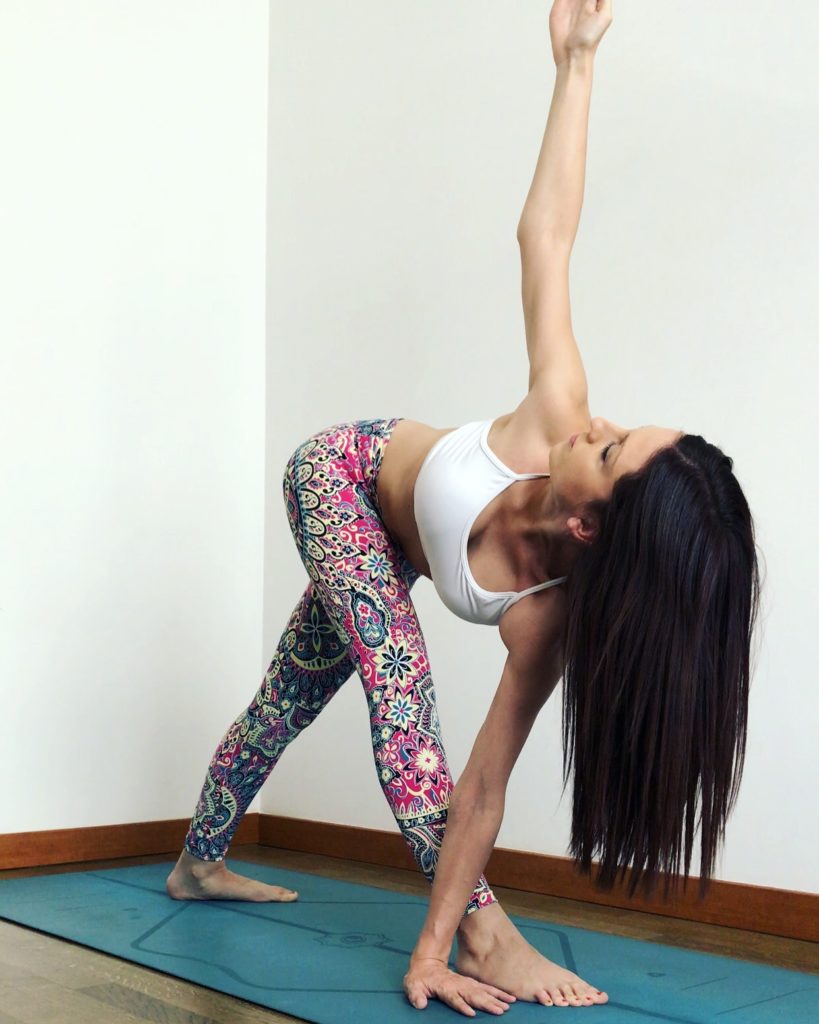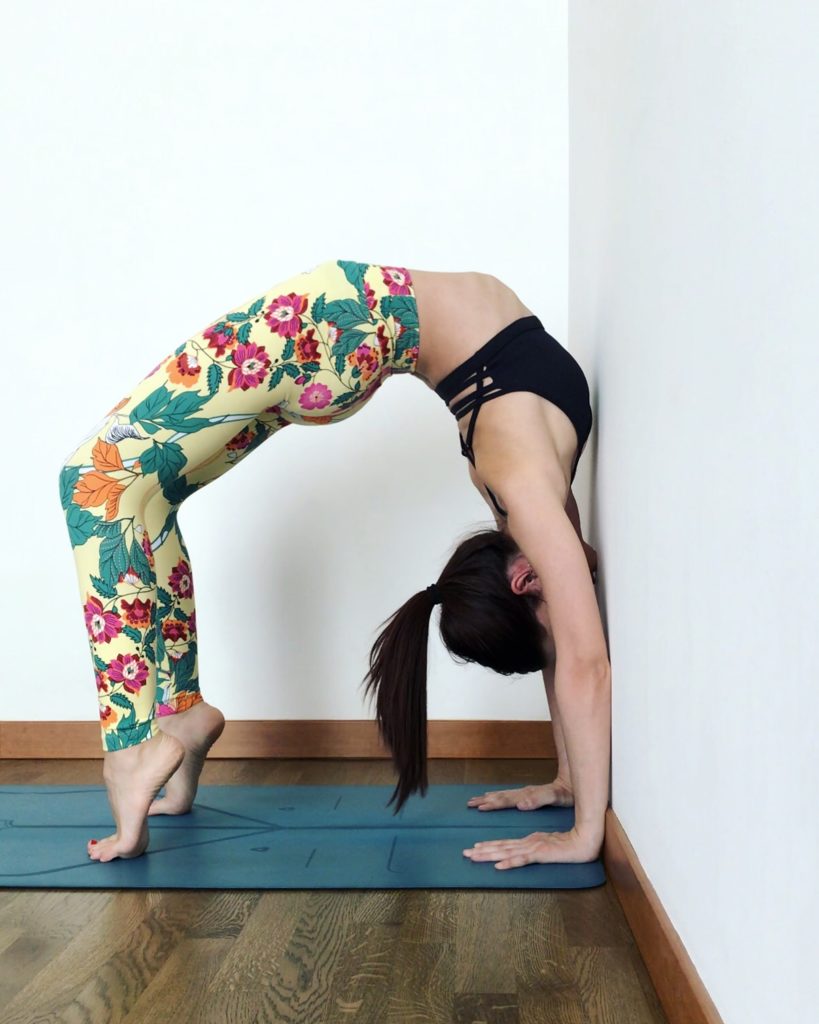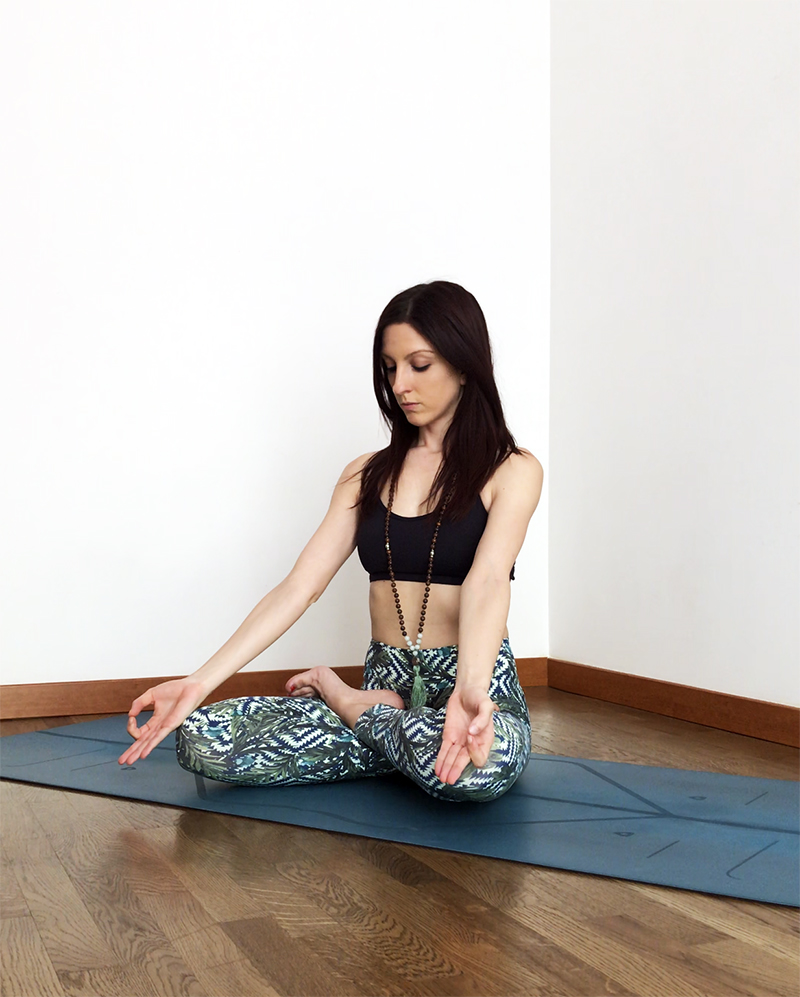
Ashtanga Yoga as a method of practice was transmitted to us by Sri K. Pattabhi Jois, director and founder of the Ashtanga Yoga Research Institute of Mysore in India, who, with his Master Sri T. Krishnamacharya, deciphered it from a ancient Sanskrit text called “Yoga Kurunta“.
It is a type of Yoga that is based on a precise and rigorous sequential order of postures, Asanas, divided into distinct series, each with a specific psycho-physiological purpose:
Primary Series – Yoga Chikitsa – detoxifies and aligns the body.
Intermediate Series – Nadi Sodhana – purifies the nervous system by opening and purifying the energy channels.
Advanced Series A, B, C, D, – Stira Bhagah Sampta – they integrate the strength and grace of the practice and yet require a great degree of flexibility and humility.
Each level is preparatory to the next and must be learned perfectly before continuing. Each position is the preparation for the other, as it develops the strength and balance required for the next.

The main components of Ashtanga Yoga are:
Breathing: Ujjayi Pranayama – partial closure of the glottis.
Body Locks: Bandha – blocks to spread the energy.
Gaze: Drishti – direct the gaze to a specific point, in continuous meditation.
Movement: Vinyasa – movement synchronized with the breath.
Breath is composed of inhalation and exhalation. Both should be balanced and regular, the length of inspiration should be the same as exhalation. Breathing in this way cleanses the nervous system. Ujjayi breathing is achieved through partial closure of the glottis by swallowing and slightly lowering the chin. It is a pranayama technique mentioned in the “Hathayogapradipika” and used in most traditional yoga schools to optimize and regulate respiratory flow.
Bandha means “closure”, “seal”, “foundation” and there are 3+1 of these closings: Mula bandha (root seal), Uddiyana bandha (seal that makes fly), Jalandhara bandha (seal of the chin), Maha bandha ( occurs when all 3 closures listed above are active). During the practice of asanas, and especially during the practice of ashtanga yoga, the first two bandhas are particularly emphasized as is the ujjayi breath (while jalandhara bandha and maha bandha are mainly used during the practice of pranayama).
Dristhi (the gaze) is the place to look while in a posture. There are 9 drishti: the nose, between the eyebrows, the navel, the thumbs, the hands, the feet, upwards, to the right and to the left. Drishti purifies and stabilizes the functioning of the mind.
Vinyasa means combined breathing and movement system. For each movement, there is only one breath. The purpose of vinyasa is internal purification. The combination of breathing and movement while performing the asanas (the yoga postures) make the blood warm, or as Pattabhi Jois says, it boils the blood. Thick blood is impure and causes disease in the body. The heat developed with the practice of yoga cleanses the blood and makes it fluid, so that it can circulate freely. The combination of asanas with movement and breathing allows blood to circulate freely around the ligaments, removing physical pain. When there is a deficiency in the circulation, pain occurs. Heated blood also moves through all internal organs removing impurities and diseases, which are expelled from the body through the sweating process that occurs with practice.

Asanas (postures) purify, strengthen and give flexibility to the body.
Tristhana represents the 3 places of attention or action: postures, the breathing system and the gaze. These 3 elements are very important in the practice of yoga, and cover 3 different levels of purification: the body, the nervous system and the mind. The same must be practiced jointly.
Through the Vinyasa system and Bandha closures, strong heat and sweating are produced. This heat cleanses the muscles and internal organs eliminating toxins through sweat. The principle of purification through heat has been a central element of Indian thought for millennia. It also improves blood circulation and flexibility, which calm the nervous system allowing the muscles and mind to relax, while sweating removes the toxins that evaporate from the skin. A full and direct breathing accompanied by movement, oxygenates and also cleanses the blood.
Breath represents the integral link between body and soul. Each movement is combined with a specific phase of breathing, you breathe in and out every time you enter and leave your postures.
Along a sequence of postures, one obtains a control of the senses and a profound mastery of oneself. By practicing this discipline with regularity and devotion, you acquire physical and mental security and stability.
Ashtanga is dynamic, the postures are held for 5 breaths and the passage between the postures becomes fluid and harmonious. Inside, the Asana continues to open and change through a subtle movement. At the end of the practice there will be room for relaxation.
Literally “Ashtanga” means eight levels which are described by Patanjali in the Yoga Sutras as:
1. Yama (Abstinence)
2. Niyama (Fulfillment)
3. Asana (Postures)
4. Pranayama (Breath control)
5. Pratyahara (Control of the senses)
6. Dharana (Concentration)
7. Dhyana (Meditation)
8. Samadhi (Contemplation)

These levels support each other. The practice of the Asanas must be well done for an appropriate and correct practice of Pranayama and represents an important development key of the two previous levels, Yama and Niyama. Only after having firmly rooted within us these first four levels, which can be considered as oriented towards the outside (as actions), only then the following four levels oriented mainly towards the inside, can be developed and will evolve spontaneously with the passage of time.
Why always to the right
In the practice of Ashtanga Yoga every opening in the execution of the positions takes place in a clockwise direction and every movement is performed starting from the right. This “right-handed” nature of Yoga seems to draw its origin from one of the most ancient and universally attested sacred rites practiced in many regions of our planet: Circumambulation (from the Latin circumambulatio). This archaic rite consists in revolving around a person, ground, sacred building, or other object in order to close the circumvented thing in a sacred circle that removes evil influences to procure for those who revolve around the object the beneficial effects that want, and is divided into two types:
Circumambulatio apotropaica: with the function of closing in a sacred circle the evil influences of the person or of the surrounded thing;
Circumambulatio augurale: with the function of providing luck and benefits to those who practice it.
In India this rite is generically called Parikarama. If the propitiatory ceremonial is performed counterclockwise it is called prasavya; if it is performed clockwise, it is more specifically called pradakshina. Usually with this Sanskrit term it is customary to define the most important of the rotating energy forces present in the human body, which rotates precisely from right to left in an ascending direction. The development of this force represents, according to the great masters of yoga, the instrument of ascent of kundalini and this being the primary purpose of the practice of Ashtanga Yoga, this is why the openings and movements are always to the right.